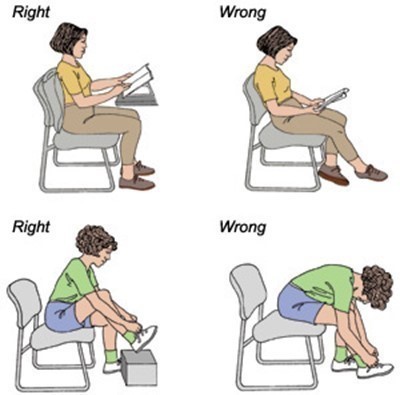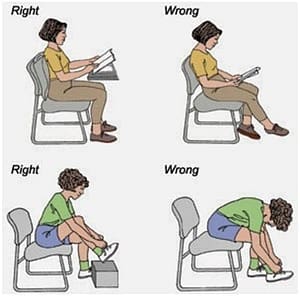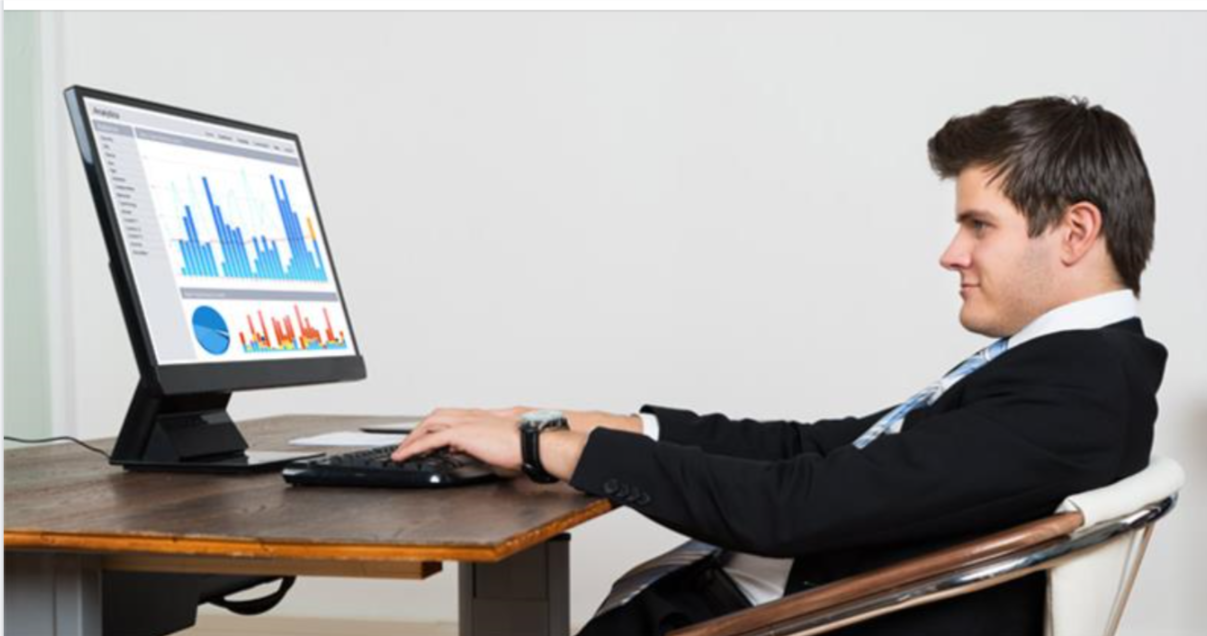
3 Easy Ways to Sit Better
One of the most common questions that we receive from my patients is how to attain proper posture. First, we must understand what exactly posture is. In simple terms, posture is the relationship between the skeleton to the earth's gravitational forces. The skeleton is designed to disperse forces from the top of the head, through the feet and eventually to the floor. With a totally "neutral" posture, the body is designed to disperse these forces with minimal impact on the surrounding tissues of the body. But when the posture is altered in any way, that alters how the body perceives these forces. This leads to joints of the body taking on more force than they are designed to hold. This type of stress can lead to chronic diseases such as disc degeneration, osteoarthritis, chronic low back pain, sciatica, upper back and neck pain, and cervicogenic headaches. Considering the majority of our culture spends more than 40 hours per week in a seated position, seated ergonomics can be one of the most important topics that we will discuss over the course of this month. Sitting, in general, is not a natural position, so there is no "perfect" position to sit. With that in mind, we understand that sitting for prolonged periods is unavoidable for some people. Way back in the caveman days, there were no chairs. Humans would squat in the catcher's position much like apes when resting. This would utilize the full range of motion in the hips and keep the hip joints mobile. When sitting in a chair, we only utilize about half of the hip joints' range of motion, leading to tight hip capsules and hip problems. I have put together a few reference points for you to remember while you're sitting. These reference points aim to reduce your body's stress while seated.
1. Use Your Pelvis Properly
The Problem:
The most important adjustment you can make in a seated position is to make sure that you are sitting correctly on your pelvis. Many people slouch in their chairs and roll forward onto the sacrum. When we scoot up towards the front of our chair, which transfers the weight from our upper body onto the front of the sacrum, this places tremendous pressure on the lower lumbar discs and the sacroiliac joint.
The fix:
Simply sit back in the chair and sit on the "sit bones" (ischial tuberosity) underneath the pelvis. This will promote a more neutral orientation of the pelvis, promoting the normal curvature (lordosis) of the lumbar spine and taking pressure off the lumbar discs. Some products, such as lumbar support cushions, help promote this posture. Or you can take a small pillow and place it behind your chair to remind yourself not to slouch.

2. The Knee Angle

The Problem:
We often see people sitting with their feet folded under their chairs (with the knees at an acute angle) or spread out in front of them (with an obtuse angle of the knee joint). Either of these positions places our pelvis and our hips in a position that makes it harder to gain the proper posture that we mentioned above.
The Fix:
We want our feet directly under our knees at all times, which puts our knees at a nice 90-degree angle. Another thing you can do is keep your knees bent at 90 degrees and place a small stool underneath your feet in order to gain more flexion in the hip joint. Ideally, we want the knees higher than the hips; when this is accomplished, it takes a lot of pressure off the low back.
3. Shoulder & Head Positioning

Incorrect Seated Posture!
The Problem:
Often people have to lean forward or look downward in order to see whatever they are working on, whether it is a book or a computer screen. This causes flexion of the neck and forward weight head posture.

The Fix:
We want to ensure that our shoulders are rolled back into a neutral position and that our chin remains parallel to the floor. In order to accomplish the proper chin positioning, you may need to raise the computer screen about half a foot off the desk. The optimal positioning of the computer monitor is to have the top of the monitor at eye level.
MOST IMPORTANTLY, KEEP MOVING! There is nothing natural about a seated posture. Avoid sitting for more than 45 minutes at a time. When we sit for more than this, we place excess stress and pressure on the low back and allow blood to pool within the veins of our lower extremities. Get up, stand, and walk around or do some simple stretches every hour to keep your blood flowing and allow all of the blood that is pooling in the veins in your legs to get recycled back into your heart. This will help you avoid developing blood clots throughout your legs as well as keep your joints moving properly. Motion is Lotion!
If you feel as if you are experiencing pain related to poor posture, one of our Chiropractors would be happy to help.






